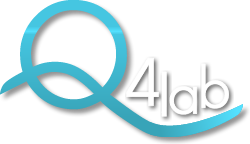Protocol - Ishikawa Diagram
Ishikawa Diagram (or diagram of 4 “M”) is the approach most frequently used in quality systems to enumerate the possible causes of a problem in a process and organize them in a causal chain.
Category:
Quality methodologies
Last revision: Jun 21, 2016
Author(s):
Kaoru Ishikawa
Contact
Name: Giovanna L. Liguori
Address: Institute of Genetics and Biophysics Via Pietro Castellino, 111 Naples 80131 ITALY
Email: giovanna.liguori@igb.cnr.it
Figure legend:
Ishikawa Diagram (Fishbone)
Steps
| Description | Temperature | Time | Note |
|---|---|---|---|
|
Begin with a clear definition of the effect at issue, which is inserted in a rectangle linked to a line called the causal line
|
|||
|
From this line to extend the primary branches, which constitute a class of potential primary causes
|
|||
|
The categories or classes of primary causes can be defined in relation to the type of problem at issue or according to four standard types
|
|||
|
- Manpower: analyze the possible causes resulting from human resources
|
|||
|
- Materials: analyze the possible causes resulting from materials used
|
|||
|
- Methods: analyze the possible causes resulting from procedures and operating practices.
|
|||
|
- Machines: analyze the possible causes resulting from work instruments
|
|||
|
In the analysis of the primary causes it is possible to add to these new secondary line, which represent secondary causes
|
Other informations
You can add a fifth branch, the environment, called by the French word “Milieu”.
Quality validation:
Yes
Validation info
The methodology has been used to develop the Model described in a peer-reviewed article
| Citations |
|---|
| Digilio F.A., Lanati A., Bongiovanni A., Mascia A., Di Carlo M., Barra A., Cirafici A.M., Colotti G., Kisslinger A. Lacerra G., Liguori G.L. Quality-based model for life sciences research guidelines. Accreditation and Quality Assurance, 21, 221–230 (2016) |
| Ishikawa K (1968) Guide to quality control. JUSE, Tokyo |
Funded by: FaReBio



